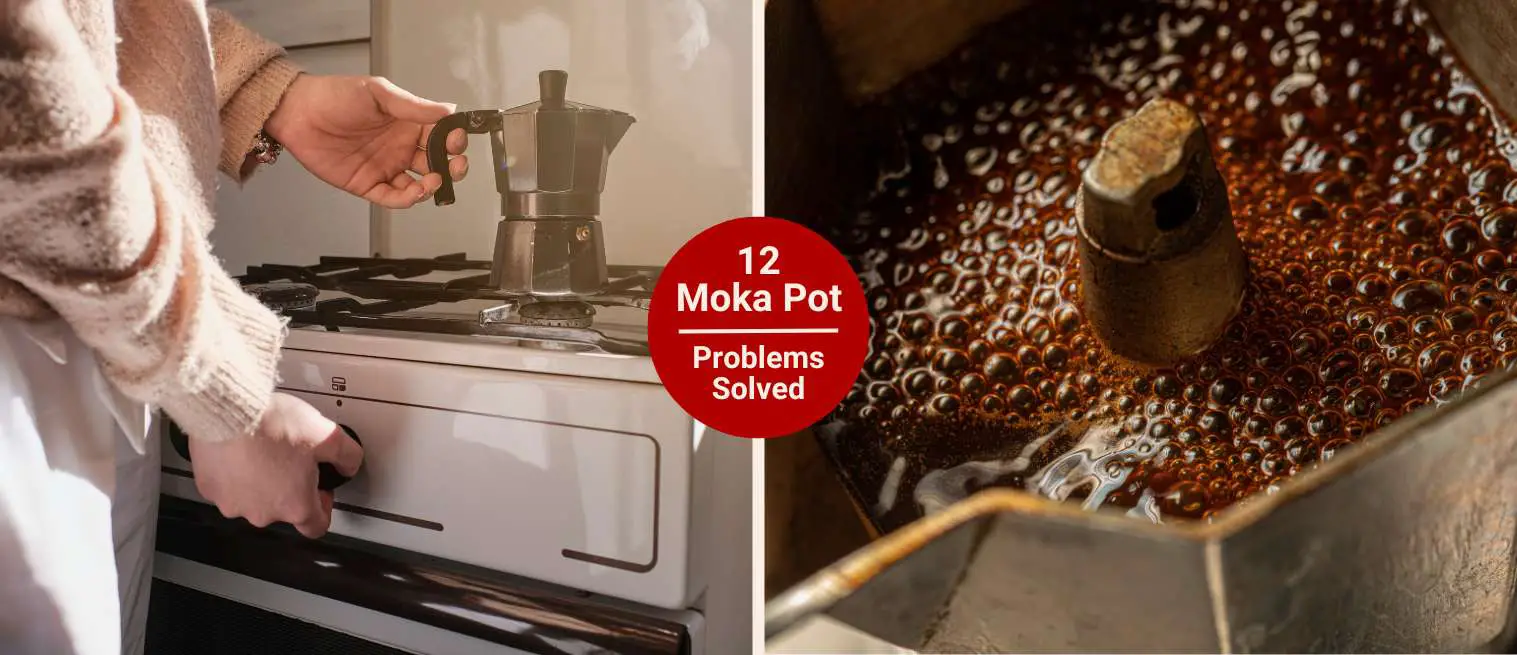11 Moka Pot Problems Solved (Simple Fixes You Can Try Today)
Last updated on August 28th, 2025 at 03:38 pm
Ever had your moka pot refuse to cooperate right when you want that perfect cup?
I have a large, classic Italian moka pot, and after a couple of months, things went sideways. The coffee stopped brewing properly. In other words, nothing came out.
I’d turn off the heat from the stove, switch it back on, wait, and eventually, with way too much struggle, the coffee would brew… but it tasted burnt and downright awful.
Not exactly the smooth, rich flavor I was after.
The frustration is real, but here’s the good news: most moka pot problems are easy to fix once you know what’s going wrong.
In this guide, you’ll learn the most common issues, why they happen, and exactly how to solve them so you can enjoy bold, delicious moka coffee every time. So let’s start brewing!
Moka Pot Problems & Fixes: Quick Table
If you want to read more details, keep going after this table. It’s just a quick compact guide.
| # | Problem | Likely Cause | Quick Fix |
|---|---|---|---|
| 1 | Coffee tastes bitter or burnt | Grind too fine or heat too high | Use a slightly coarser grind, lower heat, remove pot sooner |
| 2 | Coffee sputters or explodes | Heat too high or blocked channel | Lower the heat, check gasket/filter for blockages |
| 3 | Water doesn’t rise to top | Grind too fine, blocked filter, or low heat | Clean filter plate, use medium grind, ensure enough heat |
| 4 | Moka pot leaking at seal | Worn gasket or loose threading | Replace gasket, screw chambers firmly (not over-tight) |
| 5 | Coffee brews too fast | Grind too coarse or not enough coffee | Use medium-fine grind, fill basket evenly |
| 6 | Coffee brews too slow | Grind too fine or clogged filter | Adjust grind, clean basket/filter regularly |
| 7 | Moka pot hisses excessively | Blocked or faulty pressure valve | Clean safety valve, replace if worn |
| 8 | Coffee grounds in cup | Grind too fine or damaged gasket/filter | Use medium grind, inspect and replace parts if needed |
| 9 | Metallic or strange taste | New pot not seasoned or old oils built up | Run seasoning brews, deep clean regularly |
| 10 | Weak or watery coffee | Underfilling coffee basket or grind too coarse | Fill basket properly, try finer grind |
| 11 | Burning smell | Heat too high or left on stove too long | Keep heat low-medium, remove pot as soon as brew finishes |
11 Common Moka Pot Problems (and Fixes)
From bitter coffee to leaking seals, here are the most common moka pot problems and the simple fixes to get your brew back on track.
1 – Coffee Tastes Weak or Watery
There’s nothing more disappointing than brewing a moka pot and ending up with something that tastes more like tinted water than coffee. I used to think it was the beans, but most of the time the problem is in the grind or how you’re brewing.

If the grind is too coarse, the water zips through without extracting much flavor. Same goes for underfilling the basket. The fact is, less coffee means weaker coffee. And don’t forget heat: if it’s too low, the water never builds enough pressure to brew properly.
Fix: Use a finer grind (but not espresso powder-fine), fill the basket all the way (without tamping), and keep your heat steady at medium.
2 – Coffee Is Bitter or Burnt
If you’ve ever taken that first sip of moka pot coffee and winced, you know the taste I’m talking about: harsh, bitter, almost like licking a charred pan.
I’ve had plenty of mornings ruined this way, and nine times out of ten it came down to over-extraction. Basically, the water sat with the coffee grounds too long, pulling out all the bitter compounds instead of the good stuff.

The two biggest problems? Grind size and heat.
When I first started, I thought using a super-fine espresso grind would make my moka pot brew stronger. But instead, it just choked the filter and dragged the process out.
Then, you add high heat to that equation, and suddenly you’re cooking the grounds rather than brewing them. As a result, the coffee tastes more like burnt rubber than anything you’d want to drink.
Fix: Use a grind that’s a notch coarser than espresso. You also want to keep the heat low to medium (never blasting high), and as soon as the top chamber is full, pull the moka pot off the stove.
3 – Coffee Sputters or Explodes Out of Spout
If you’ve ever had your moka pot unexpectedly start sputtering like an angry volcano, you know how messy it can get.
I still remember one morning when I cranked the stove heat way too high because I was in a rush. Within seconds, the moka pot started shaking and spitting coffee everywhere. Not exactly the calmest start to the day.
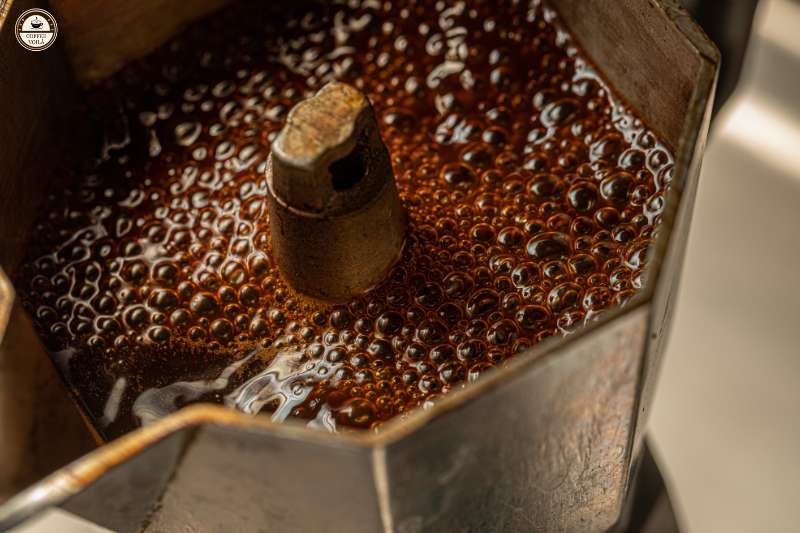
What usually happens is the pressure inside builds up too fast or gets blocked, and the coffee doesn’t flow smoothly into the top chamber.
Usually, high heat is the main cause and the other issue is blockages. Sometimes old grounds get stuck around the filter plate, or the gasket isn’t sealing properly, and suddenly the pressure has nowhere to go except out the spout in a sputtering mess.
Fix: You should keep your heat at a steady medium (never full blast), and make a habit of checking your gasket and filter for buildup or cracks. A quick rinse after every brew and a deeper clean once in a while can save you from those explosive coffee disasters.
4 – Water Doesn’t Rise to Top Chamber
So you’ve got your moka pot on the stove, you’re waiting for that coffee to bubble up into the top chamber… and nothing happens. Usually, it means something’s blocking the process, and the good news is it’s almost always fixable.
Most of the time, the grind is the problem. If you go too fine like espresso powder, the water can’t push through. Instead of coffee, you’re left with a clogged pot.
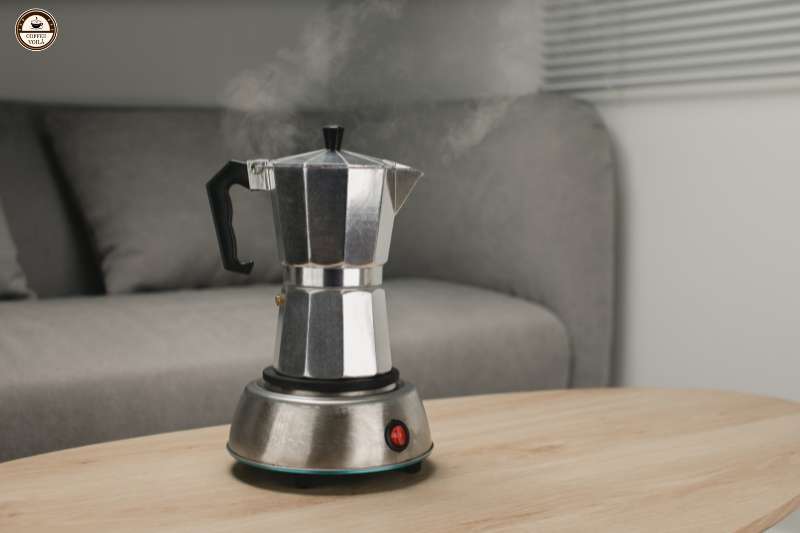
Another sneaky problem is the filter plate. If old oils or tiny grounds are stuck in there, pressure won’t build, and the water sits in the bottom chamber.
And then there’s the heat. If it’s too low, the moka pot won’t generate enough steam to move the water up. So it kind of hums along doing nothing.
Fix: Give your filter plate a good clean. You can use an old toothbrush for this. Plus, use a medium grind (finer than drip but not powdery like espresso).
And make sure to double-check the water chamber. If you fill past the safety valve, the pressure balance gets thrown off, and the brew won’t rise. Do those three things, and you’ll have that enjoyable flow of coffee into the top chamber again.
5 – Moka Pot Leaking at the Seal
If you’ve ever brewed with your moka pot and noticed hot coffee spurting out the sides instead of the spout, you’re not alone.
The first time it happened to me, I honestly thought my moka pot was done for good. But nope, it was the gasket. That tiny piece of rubber makes a huge difference.
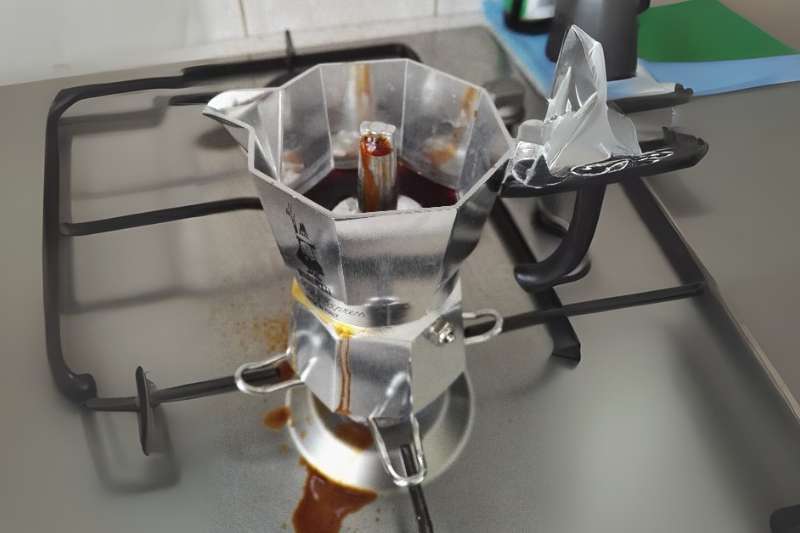
Here’s the thing: the gasket (that little rubber ring between the top and bottom chambers) wears out over time. After enough brewing cycles, heat and pressure stretch it out, and the seal isn’t tight anymore.
You’ll notice leaks, sputtering, or even a mess dripping down your stove. Another sneaky issue is loose threading. If the two chambers aren’t screwed together right, the pressure finds its way out through the gap.
Fix: Replacement gaskets are cheap and commonly come in packs of three, so you’re set for a while. Simply unscrew the pot, pop the old gasket out with a butter knife, and slip the new one in.
While you’re at it, check the filter plate too. Sometimes coffee oils collect there and make the seal worse. When reassembling, screw the chambers together firmly, but don’t overdo it.
The reason is that overtightening can strip the threads, and that’s a headache you don’t want. Once you replace the gasket and stop cranking the pot shut like a jar of pickles, the leaks will vanish and your moka pot will brew like new again.
6 – Coffee Brews Too Fast
Have you ever set your moka pot on the stove, stepped away for just a minute, and soon after the coffee’s already done? If it brews too fast, you’ll notice the flavor is weak, watery, and nowhere near the rich coffee you were expecting.
When this happens, the grind size is often to blame. If your coffee is ground too coarse, the water flows straight through without pulling out all the flavor.
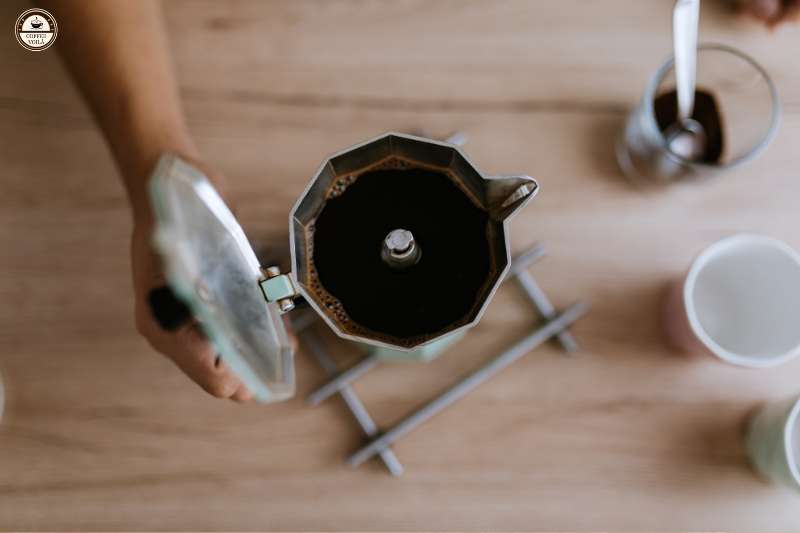
Basically, it’s like trying to make espresso with French press grounds, it just doesn’t work.
Another reason is not filling the basket all the way. When you skimp on coffee, there’s less resistance for the water. For this reason, it races through instead of slowly extracting those bold flavors.
I recommend always using a medium-fine grind. It should be finer than drip coffee but a little coarser than espresso. And make sure the basket is filled right up to the rim and leveled off with your finger. Also, don’t tamp it down, just keep it even.
Fix: Adjust to a medium-fine grind and fill your basket evenly every time. Once you do this, your moka pot will brew at the right pace, giving you a cup that’s full-bodied, rich, and way more enjoyable.
7 – Coffee Brews Too Slow
I can’t tell you how many times I’ve stood over my moka pot, tapping my foot because the coffee won’t finish brewing. You’re sitting there, watching tiny drops crawl their way up into the top chamber, and by the time it’s done, the coffee tastes harsh and over-extracted.
Super frustrating, especially when all you wanted was a quick, and strong cup.
Anytime coffee brews too slowly in a moka pot, it’s usually one of two problems: either your grind is too fine, or the filter is clogged.
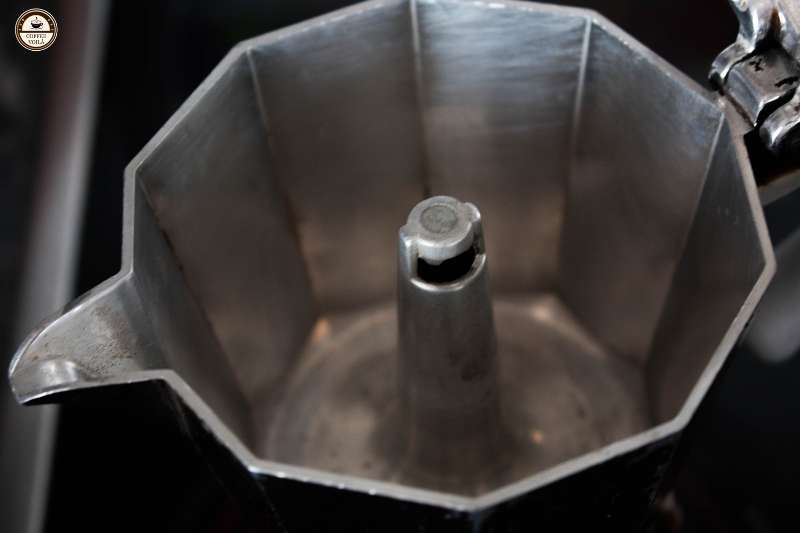
I’ve made this mistake plenty of times by grinding beans almost like espresso. That super-fine powder packs too tight, and the water can’t push through at a steady pace. Instead, it gets stuck, builds pressure, and dribbles out painfully slow.
Another sneaky issue is a dirty filter basket or clogged holes in the filter plate. The reason is that old coffee oils and tiny grounds tend to accumulate there, and over time, they make it harder for water to flow.
Even if you rinse your moka pot after every brew, it still needs a good scrub once in a while.
Fix: I suggest switching to a medium-fine grind. You want something finer than drip coffee but not as powdery as espresso.
Then, get into the habit of cleaning the basket and filter regularly. A quick poke with a toothpick to clear the tiny holes works wonders. Once you do this, your moka pot will run smoothly and give you a good cup of coffee.
8 – Moka Pot Hisses Excessively
If your moka pot starts hissing like a steam engine? Well, most of the time, that noise means pressure isn’t escaping the way it should, and the safety valve is the main suspect.
You might not realize it, but that tiny valve in the lower chamber is there to keep things safe. If it gets clogged with old coffee oils, fine grounds, or even mineral buildup from hard water, the steam has nowhere to go, and you hear that angry hiss.
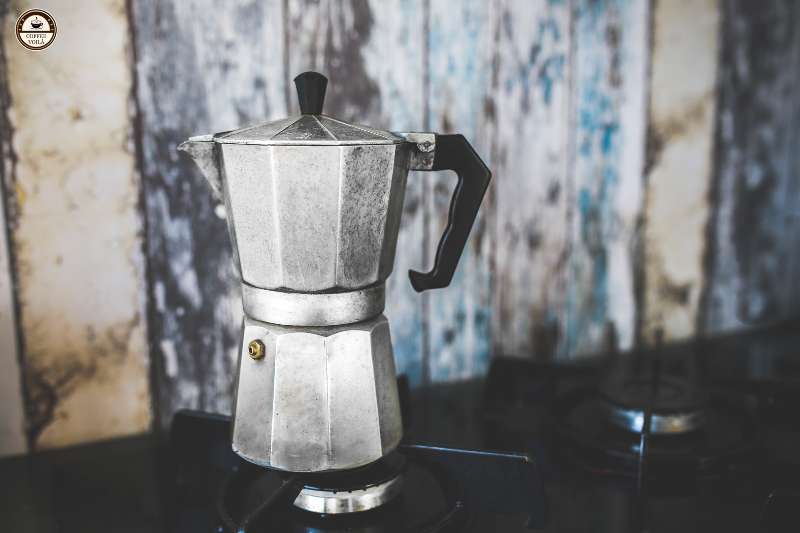
In other cases, the valve itself wears out over time. This often happens after years of use.
What you should do first is give the valve a proper cleaning. A toothpick or pin can help clear out any gunk, and a light rinse usually does the trick.
However, if you notice it’s cracked, rusted, or not functioning like it used to, replacing it is the best move. They’re inexpensive, and it’s way better than risking a dangerous pressure buildup.
Fix: I recommend keeping the safety valve clean, and if it looks old or faulty, swap it out. That way, your moka pot stays safe, and you won’t have to worry about scary hissing sounds ruining your day.
9 – Coffee Grounds in the Cup
Few things are more disappointing than sipping your moka pot coffee and finding gritty grounds swirling around the bottom of your cup.
It feels like you’ve done everything right. But then you get that muddy texture, and your “smooth espresso-like brew” isn’t so smooth anymore.
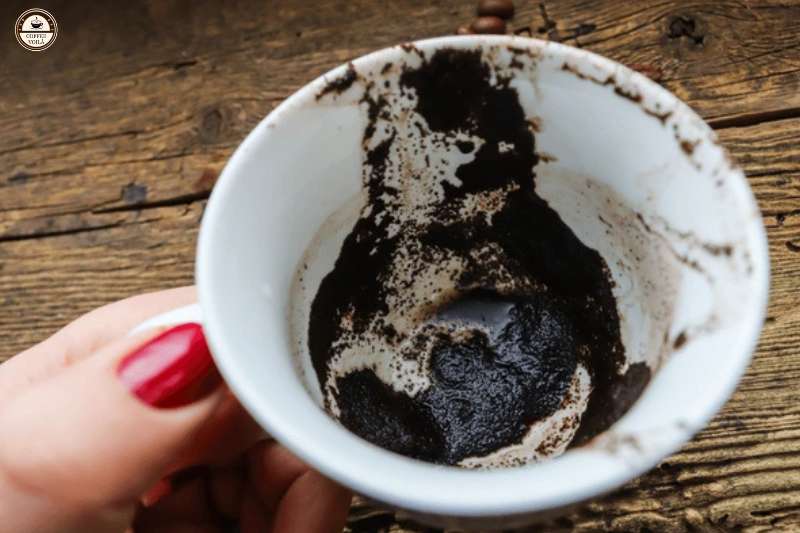
This usually happens because the grind is too fine. When coffee particles are tiny, they slip right through the filter plate and end up in your drink.
The moka pot does best with a medium grind, like we talked about earlier.
Another issue may be a worn-out gasket or a filter plate that’s seen better days. Over time, those parts warp or lose their seal, and tiny gaps open up, giving the grounds an easy escape route.
Fix: You want to inspect your gasket and filter regularly. If you see cracks, bends, or warping, swap them out. They’re cheap and easy to replace, and it makes a massive difference. And once again, stick with a medium grind and avoid overfilling.
10 – Metallic or Strange Taste
You finally brew that first cup in your shiny new moka pot, take a sip… and it tastes like you’ve just chewed on a penny. Well, that metallic tang is common with new aluminum pots.

It doesn’t mean your moka pot is ruined. Instead, it needs to be seasoned before you start brewing the good stuff.
Fix: You should run a few test brews with some cheap coffee. For this, fill the basket, brew as usual, then toss it out rather than drinking it.
Do this two or three times and the natural oils will coat the inside, smoothing out that harsh metallic edge.But maybe your moka pot isn’t new, and you’re still getting odd flavors. In that case, it’s likely buildup from old coffee oils.
Over time, those oils go rancid and make every cup taste a little funky. The fix is to give your pot a proper deep clean. So, scrub the filter plate, gasket, and chambers with hot water and a brush. You want to skip the dish soap if it’s aluminum, though; it tends to leave a weird aftertaste.
11 – Burning Smell While Brewing
You know that sinking feeling when you catch a burning smell in the kitchen and realize it’s your moka pot.
The fact is nine times out of ten, it’s not the coffee itself that’s ruined but the way the heat is being handled. If the flame (or burner) is cranked too high, the metal heats unevenly and scorches the coffee before it even finishes brewing.
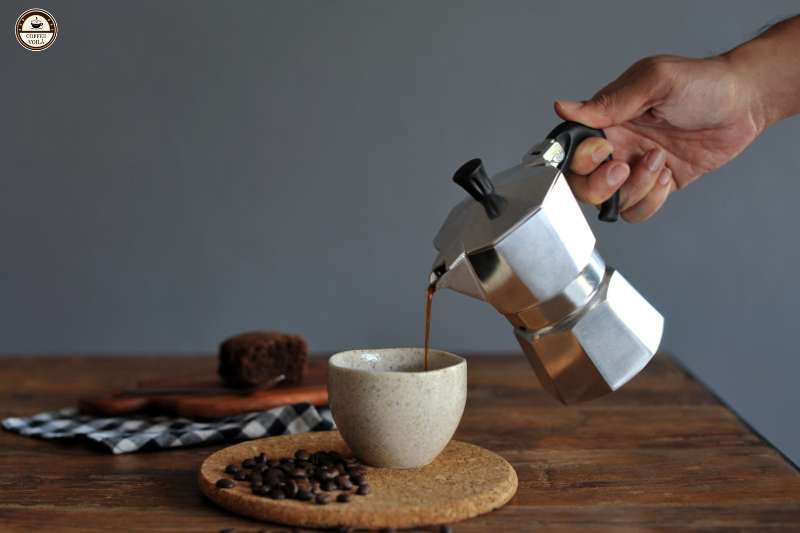
Another mistake that sneaks up on you is leaving the moka pot sitting on the stove after the last drops of coffee have bubbled up.
Even a minute too long and the base starts overheating, cooking the leftover oils, and giving everything a burnt, bitter edge. Not only does it mess with flavor. But it also shortens the life of your pot since the gasket and handle don’t love that extra heat.
Fix: The fix is simple, but it takes a little attention. You should keep the heat at a steady low-to-medium level. You want a gentle bubble and not an angry hiss.
As soon as the top chamber fills, pull the moka pot off the stove right away. If you let it sit, it’s like leaving popcorn on the burner (burnt in no time).
Tips for Preventing Moka Pot Problems
A lot of moka pot headaches can be avoided if you build a few good habits into your brewing routine. For instance:
1 – Always use fresh, medium-fine coffee grounds
Stale coffee tastes flat no matter what. So, you want to grind fresh if you can, and aim for that sweet spot between fine (espresso) and coarse (French press). As explained, too fine and you’ll clog the filter, too coarse and the brew rushes through like water.
2 – Don’t tamp the basket (unlike espresso machines)
This is a common rookie mistake. A moka pot isn’t an espresso machine. For this reason, packing the grounds tight creates too much pressure. Instead, fill the basket evenly, then give it a light shake or tap to level it out.
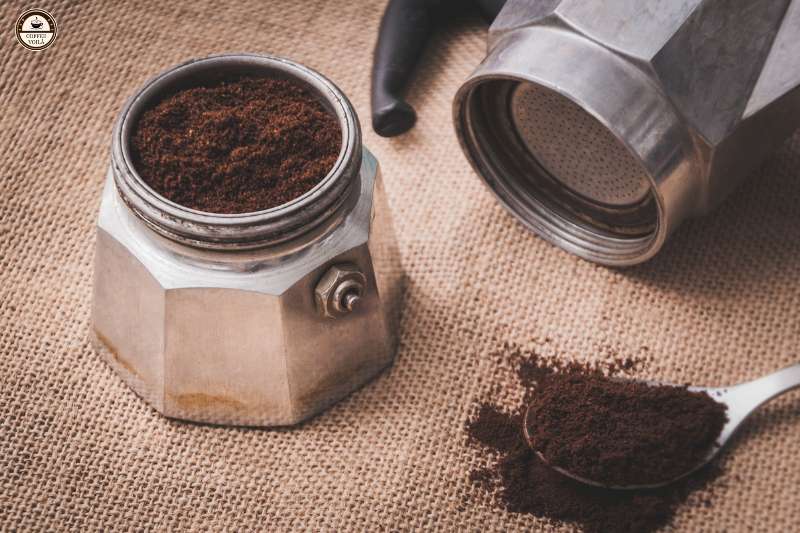
3 – Use filtered water to avoid mineral buildup
Hard water leaves behind mineral deposits that gunk up the inside of your pot over time. So, use filtered water. This keeps your moka pot cleaner, helps the safety valve stay clear, and improves flavor.
4 – Clean thoroughly after each use
Give your moka pot a quick rinse after every brew. If it’s aluminum, skip the dish soap. This strips the seasoning and can leave a weird taste. Stainless steel is a bit more forgiving, but I still keep it simple with hot water and a towel dry.
5 – Replace gasket and filter plate every few months
Often check it for cracks, warping, or stiffness. Same goes for the filter plate. I recommend swapping these parts out every few months. This keeps your pot sealed properly and saves you from surprise leaks.
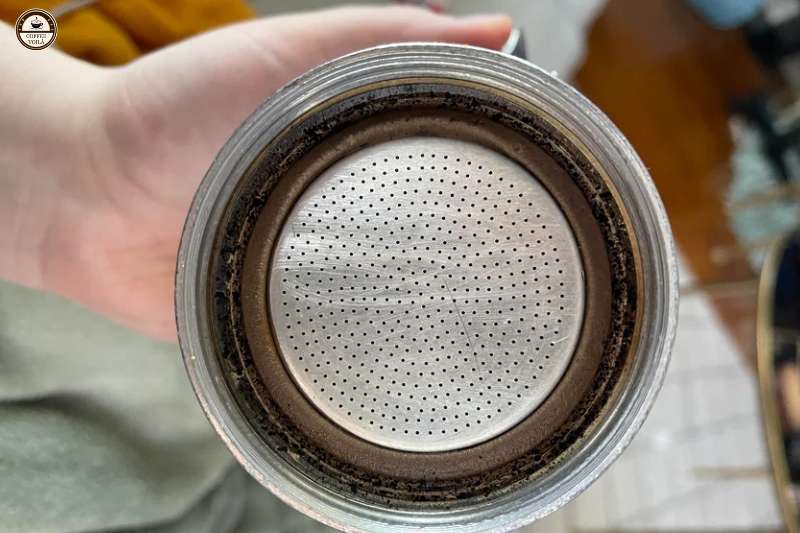
Last Thoughts
So, have you ever run into any of these moka pot problems? Which fix worked best for you or did you figure out a different trick altogether? I’d love to hear your experience, so drop it in the comments below.
And if you found this guide helpful, go ahead and share it with a friend who’s struggling with their moka pot.

